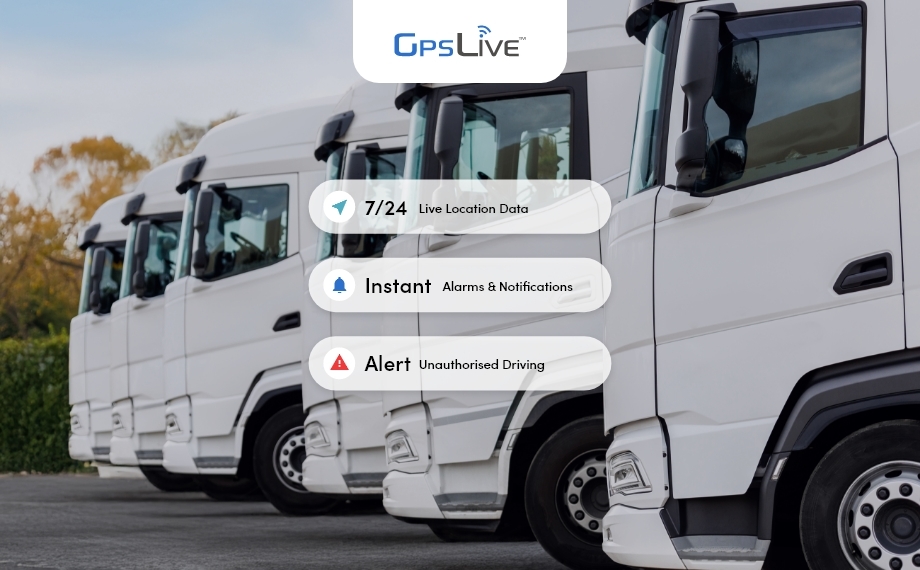Irrespective of the size, fleet companies can struggle to keep track of each vehicle and shipment and gain maximum visibility into operations. The logistics industry is constantly evolving with a growing dependence on technological solutions. Additionally, customer expectations are changing, demanding frictionless services and experience.
All this can put more pressure on fleet companies to sustain and grow business. Having said that, better fleet visibility empowers them to make wise decisions and plan business growth accordingly. It not only helps meet long-term goals but also serves customers better and keeps them satisfied.
A holistic view of all operations and assets empowers fleet managers to ensure efficient operations. By analysing fleet usage and customer demand patterns, fleet companies can scale operations accordingly and strengthen business operations.
But how can fleet managers gain maximum visibility? For example, it is tough for fleet managers to keep an eye on each vehicle, driver, maintenance, fuel, and much more.
Using traditional spreadsheets can lead to errors or missing out on essential aspects.
Fleet companies must adopt cutting-edge digitised solutions like fleet tracking software to monitor operations and ensure accuracy.

A fleet tracking solution provides all details of fleet operations in real-time, including vehicles’ location, delivery status, fuel consumption, engine health, theft alerts, and more. Real-time access to fleet usage data helps managers gain more visibility into fleet performance, leading to optimised operations.
Let’s understand how fleet tracking software can help fleet companies get more visibility.
Route Planning
Using the paper-pen approach to plan routes doesn’t help set the proper routes and offers zero visibility, wasting time and effort. How can managers ensure vehicles are on the correct route and reaching their destination on time? Fleet tracking systems can address this challenge with their GPS-empowered real-time tracking ability. With real-time data on vehicle location, traffic updates, and route history, companies can set the most optimal routes for daily operations.
Route optimization can help drivers take the shortest routes, avoid traffic or roadblocks, and reduce unnecessary mileage. It gives more visibility on the vehicle’s exact whereabouts and drivers in real-time. Likewise, fleet admins can arrange extra help immediately during emergencies using real-time location data.
Preventive Maintenance
Well-maintained vehicles are essential for efficient fleet performance. Vehicle breakdowns can hamper daily operations and delay processes, increasing maintenance costs. But, fleet tracking software provides visibility of whether each vehicle works properly.
Fleet tracking solutions help with preventive maintenance schedules by monitoring vehicle health, engine diagnostics, and other performance indicators. It ensures that each vehicle undergoes timely maintenance and potential problems are fixed before they grow to costly breakdowns.
Further, you can get visibility on hidden or unaddressed maintenance issues that risk drivers’ safety. It notifies admins whenever a vehicle is due for maintenance, helping them schedule trips accordingly. It ensures vehicles are properly running on the road, ensuring fuel efficiency and longevity.
Driver Performance
Ensuring each driver performs appropriately is essential to avoid mishaps and vehicle downtime. For example, accidents risk drivers’ lives and can hamper operational efficiency. Fleet tracking software enables admins to monitor drivers’ driving performance and take necessary steps.
Fleet managers can monitor habits like overspeeding, hard braking, cornering, etc., in real-time. They can pinpoint drivers for such actions and engage them in extra training sessions to enhance their driving skills and reduce the risk of an accident. The tracker instantly notifies of improper behaviour and helps fleet admins avoid costly breakdowns. With responsible driving habits, companies can reduce the chances of accidents and improve everyone’s safety on the road.
Admin Management
Besides vehicles and drivers, fleet managers also have to manage admin-related work like invoicing, sending quotes, managing cash inflow, etc. For example, manually calculating drivers’ HOS (Hours of Service) can take up their entire day. Fleet tracking software allows them to adopt a digitised approach and get comprehensive data on each vehicle and driver.
Vehicle tracking software ensures accurate records of working hours, matching up timesheets and job tickets. Fleet managers can automate scheduling jobs, dispatching drivers, and creating invoices. Fleet tracking systems also provide data about shutoff and startup times to precisely know the time spent during breaks or unauthorised trips. Fleet companies can streamline admin processes, save time and money, and focus on growing business.
Detailed Reports
Fleet tracking software offers detailed reports to understand fleet performance and usage in depth. It provides insights into fuel consumption, excessive fuel consumption, engine idling, driving behaviour, engine health, etc. Leveraging these insights can help them identify areas of improvement and eliminate unnecessary things.
More visibility fosters data-driven decision-making, resulting in streamlined operations and reduced costs.
Technological solutions like fleet tracking software can help fleet companies gain visibility and thrive on accurate data. From scheduling jobs to driver management, fleet tracking makes monitoring each aspect of business simple and effective. A productive fleet keeps costs low, boosts profits, and improves customer service.


